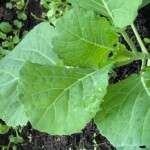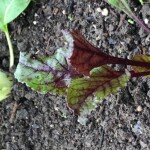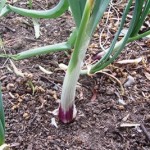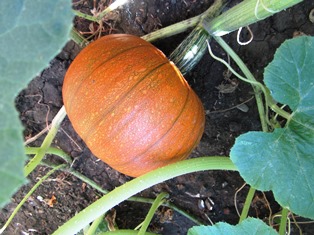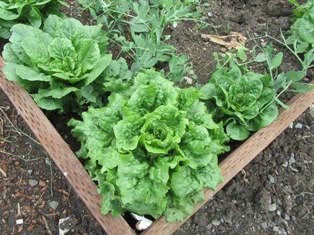Gardening under Glass
This year I planted a winter garden. I’m growing most of my vegetables in cold frames.
When the water outside is frozen and the grass and rooftops glisten with frost, it’s a thrill to see lush green vegetables growing under glass in my garden.
Vegetables like spinach, broccoli, French breakfast radishes, bok choy, and sugar snap peas are thriving where they’ve been planted in good soil under a cold frame.
Cold frames are easy to construct. Basically, they are transparent covers over a prepared bed of soil. Mine are made of old, salvaged windows that crank open and are mounted atop some of our four-by-six-foot raised beds. Cold frames protect against rain, wind, ice, and snow. The frames can even protect somewhat against infestation by common pests.
It’s important to provide ventilation by opening the cold frame on warm days. Under glass, the heat intensifies and could burn your tender plants. When night-time temps plunge, keep the cold frame closed. You can pile further insulation against the frames using bales of straw or hay or bags of raked leaves.
Inside these protected glass spaces this time of year (in deep December), a variety of cool-season crops can be cultivated. Consider planting seedlings of green leafy plants like kale, mustard greens, cabbages, turnips, radishes, carrots, beets, lettuces, broccoli, and onions.
Our farmette is located in Zone 15. We live in a sheltered valley inland from the San Francisco Bay and east of the Berkeley hills. We get really hot summers with temperatures that climb into triple digits. In winter, we get frost and freezes and more rarely a dusting of snow.
Long after other gardeners in our area have put away their trowels and shovels, I’m still at it. Gardening puts food on the table. When we are quarantining ourselves from others, we can focus on our passion for gardening and grow cool-season crops in late fall, early spring, and, yes, even in winter with the help of a cold frame or two.
_______________________________________________________________
If you enjoy reading about country living, gardening, or keeping chickens or bees, check out my series of cozy mysteries that are chocked full of tips, recipes, and facts about living on a farmette.
Also, check out my popular self-help, wellness, and spirituality books. All are available online or wherever books are sold and are available in a variety of formats.

More than 150 rituals for sound mind, strong body, and meaningful connections to the people around you
Cool Season Plantings for Soup, Salad, and Pie
This time of year the French sugar pumpkins, persimmons and pomegranates are ready to harvest and that means it’s also time to plant cool season crops.

My summer onions formed large bulbs that I have already harvested; it’s time to replace them with bunching onions
Yesterday I turned the dirt in one of my large planting boxes, added in some aged manure and other soil amendments, and planted red and yellow onions for soups and salads during the fall and winter. I harvested seed from my summer onions and during the winter months will grow the seed in flats for spring planting.
The cool days ahead are perfect soup days and that means carrots, fennel, cilantro, cauliflower, potatoes, and bok choy will also find a place in my fall and winter garden.
In other raised beds and boxes, I’m planting heirloom lettuces, radishes, and spinach. These traditional salad ingredients are best grown during the fall or early spring as hot weather tends to make them bolt.
The pumpkins are ready for pie-making and Halloween carving. The persimmons are perfect for custards or for eating fresh when absolutely ripe (otherwise, the fruits are so tart they will make you pucker). And those lovely red pomegranate seeds are delicious eaten raw or tossed into salads.
For a list of Northern California cool seasons vegetables, check out Sunset Magazine’s edible gardening guide at http://www.sunset.com/garden/garden-basics/cool-season-crops-00400000042441/. If you plant to purchase seed f0r your own cool season garden, I urge you to choose non-genetically modified and open-pollinated seeds so that you can harvest.
 Facebook
Facebook Goodreads
Goodreads LinkedIn
LinkedIn Meera Lester
Meera Lester Twitter
Twitter






